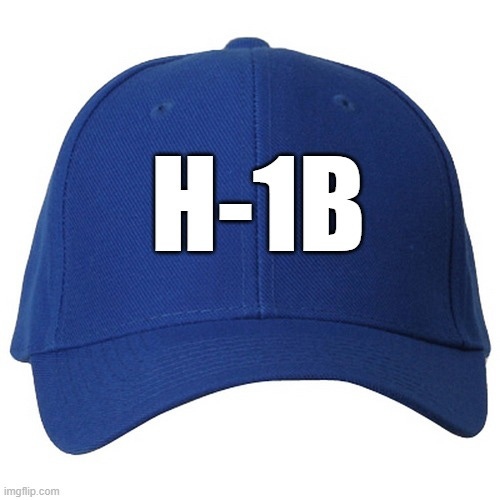What is the H-1B Cap?
This short post provides a very quick overview of the "H-1B cap" and the related H-1B cap lottery for people who are unfamiliar. It is a "101" post for people who are new to it all.
In the United States, employers can sponsor workers for temporary work visas (known as “nonimmigrant” visas), and also employers can sponsor workers for U.S. permanent resident status (green card status).
The green card sponsorship process is often very slow, taking years to complete - and in some situations - MANY years. It is a frustrating situation. And a person being sponsored by an employer for a green card does not necessarily have work authorization while the green card case is ‘in process.’ This is one of the great challenges, that is, getting someone work authorization NOW while they wait for a green card.
The temporary work visa process can potentially be faster, so employers will often seek to hire someone in a temporary work visa first and then transition that to green card status later.
[This ‘double-work’ situation basically helps no one, except the lawyers! So obviously, it’s awesome….]
One of the most common temporary work visas is the H-1B visa. It is called “H-1B” based on where it sits within the regulations. The different temporary work visas are discussed at the USCIS regulations at 8 CFR 214.2. So the H-1B visas are discussed at 8 CFR 214.2(h).
The U.S. Department of State discusses temporary work visas here.
H-1B visas are employer-sponsored visas that are available for “specialty occupations.” Roughly speaking, this means H-1B visas are available for people coming to fill jobs that require a Bachelor’s degree and who have qualifying education or equivalent qualifying work experience. There are actually tons of little rules and nuance to which jobs qualify for H-1B designation and which candidates are eligible. I could talk for hours about this.
But the classic jobs are accountant for someone with a Bachelor’s degree (or higher degree) in accounting, or mechanical engineer for someone with a Bachelor’s degree in Mechanical Engineering. (Just 2 random examples).
H-1B visas are specific to 3 things:
Employer; and
Job; and
Location.
So if a person gets an H-1B at employer A, and then wants to work for employer B, then employer B needs to do an H-1B change of employer petition.
If a person is hired as a mechanical engineer and gets an H-1B as a mechanical engineer is promoted to engineering manager, then an H-1B amendment is needed.
If a person is hired to work in Minneapolis and gets an H-1B and then wants to work in Chicago, she needs an H-1B amendment to work in the new location.
All H-1B employers must attest to paying the “prevailing wage.” The specific rules around prevailing wages are also potentially very complicated but the general idea is that an employer should be paying a foreign worker a comparable wage to what U.S. workers make for doing the same kind of work in the same metro area.
A lot of the issues related to H-1B visas are complicated (and outside the scope of this overview), but perhaps the most important thing to know about H-1B visas is that they are generally limited. There are only a certain, limited number of H-1B visas available each year and the limit is known as the “H-1B cap.”
Because so many people want H-1B visas, the USCIS conducts a lottery every March to determine which cases they will process. The lottery is now conducted via an electronic registration system. Employers must register and list details of individuals they want to sponsor.
This week (January 29, 2024 week) - the USCIS announced various changes to the H-1B cap lottery process. Those changes were announced to hopefully prevent/reduce fraud in the lottery because in recent years there has been so much demand that there are lots of anecdotes of ‘cheating’.
The USCIS website discussing H-1Bs is here.
The USCIS website discussing the H-1B cap lottery is here.
Note well: Individuals do not self-petition for H-1Bs. Individuals should be sponsored by REAL employers with REAL job opportunities.
If an employer has identified a candidate for the H-1B cap lottery, now (early February) is the time to do preliminary due diligence to participate in the lottery next month in March.
Good luck!




